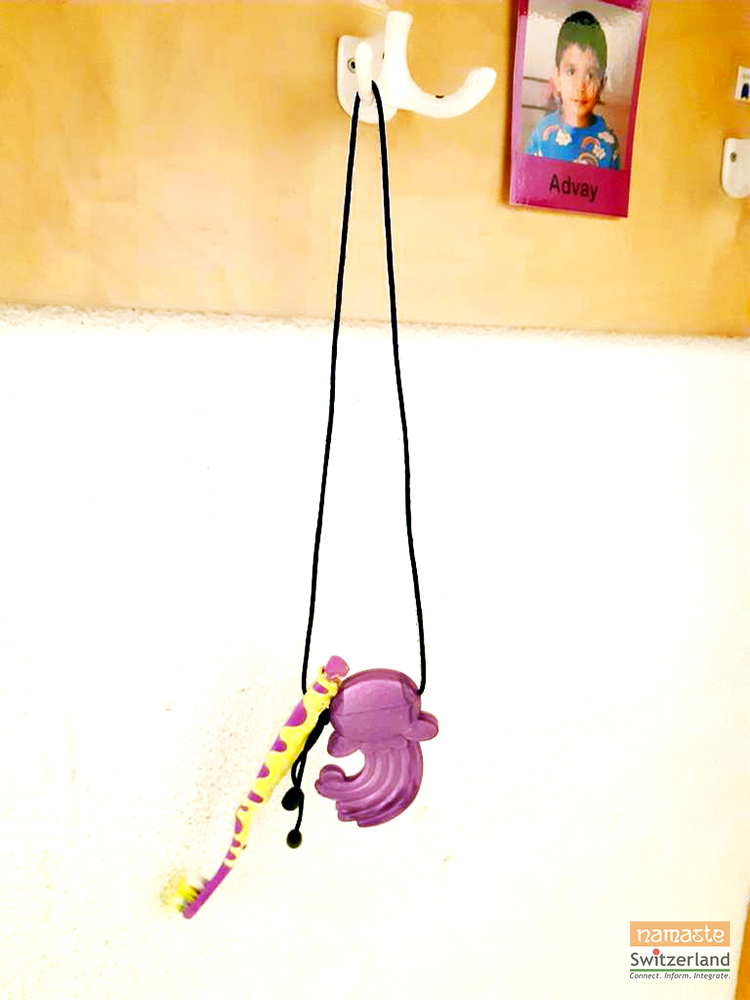Chewing serves a purpose and the need to chew should be encouraged in kids on the spectrum in a safe way.
“Children with Sensory Processing Disorder are just like a Snowman – creative, fun, cute and they meltdown. This Christmas please be understanding.” This is a message that I read somewhere on the internet posted by a parent to spread awareness – and it remained with me.
Children with SPD have issues regulating the sensory overload they experience from their environment on a regular basis and to counter this overwhelming bout of emotion, they tend to chew on things and bite their nails or hand. Our gut instinct tells us to stop them, but chewing helps such children calm and de-stress.
Also, it can help increase focus and attention and regulate one’s sensory system.
Because chewing serves a purpose and has many benefits when we embrace the need to chew and encourage kids to meet that need safely.
Chewing on the right and safe objects make the kids happier, healthier and these kids are better equipped to take on the world.

For this purpose, Chewelry has been specially designed and introduced to serve the purpose of SPD. It is a special necklace made of appealing sensory materials, configured to provide a combination of hard and soft, rigid, and pliable, curved and concave, hand tactile experiences. It comes in attractive shapes and sizes which makes chewing a lot of fun.
Chewelry was introduced to my son Advay at his school and this significantly helped him to participate in class activities and reduce his number of meltdowns. He has a cute purple troll and a small toothbrush as his chewy toys. He is able to focus more and be less disruptive. As a result, he is gaining the love for learning.
One can make this necklace by procuring certain materials at home as well. The chewy materials available in the market should be FDA approved, BPA, latex, and metal free. A silicon shape which is safe for children or a small kids’ toothbrush that they could chew on can be tied to a sturdy string around their neck if you cannot get hold of the product online.
The chewy necklace provides a fantastic sensory filter. For those who have trouble filtering sights, sounds, touch, smells and even tastes, chewing can help filter and organise the onslaught of sensory information. This discourages inappropriate biting, chewing, and teeth-grinding.
For children with Asperger’s, ADHD, ASD, Down Syndrome, Tourette syndrome and FASD who are unable to inhibit the impulse to move around, Chewelry allows discreet fidgeting to help these hyperactive children to focus better. Also, the strong jaw muscles are a great way to use pent-up energy by chewing to stay on task.
Children with Asperger’s who do not like transitions, going from home to school or from a class to cafeteria etc. find security and comfort holding on to their Chewelry.

From the users’ perspective, Chewelry is:
- Designed to be worn or clipped and always accessible
- Small and efficient so it is not an embarrassment to the wearer or a distraction to others
- Discreet and stylish to facilitate the wearer to blend in and to feel calm, comfortable and in control
- Personalised with contact, medical and allergy information
- It can be easily cleaned with soap and hot water
Chewelry helps special needs children to relax, to focus, to find comfort, and makes the challenges in their daily lives easier to confront. Countries including Canada, the USA and Australia have been quite forthcoming in creating this sensory necklace and paved the way for Chewelry, Some online shopping websites for your reference.
- https://kidcompanions.com/product-category/sentiochews/
- https://www.stimtastic.co/
- http://chewigem.com.au
- https://calmingmoments.com.au/shop/kids-chew-necklaces-pendants
I hope your child is ready for a safe, fun, creative, cool piece of Chewelry to have a more calm and focused approach to life on a daily basis. Healthy and Happy Chewing!
Disclaimer: Opinions expressed belong solely to the content provider. Namaste Switzerland does not undertake any financial/reputational/legal/misrepresentational impact or other obligations/ liabilities that may arise from the content.












